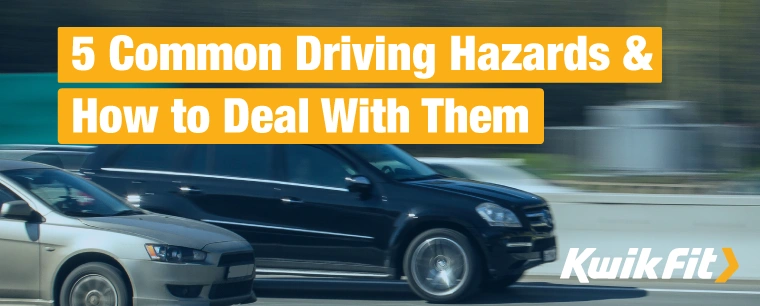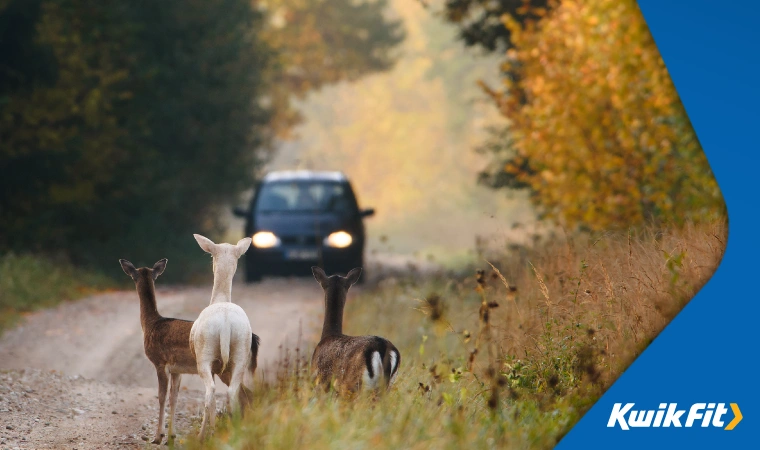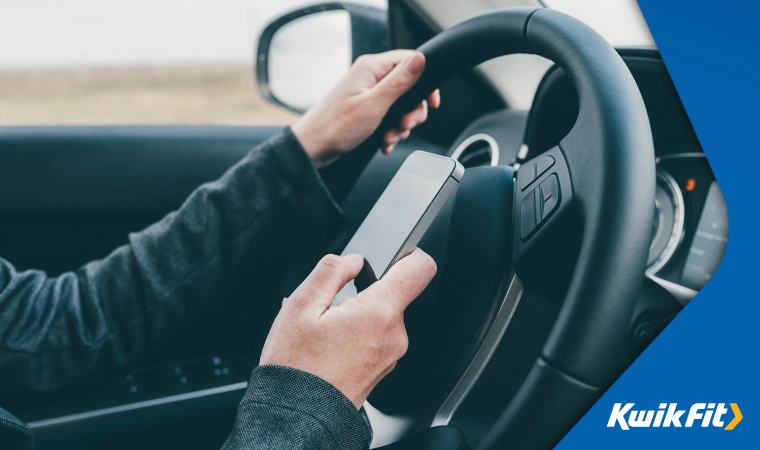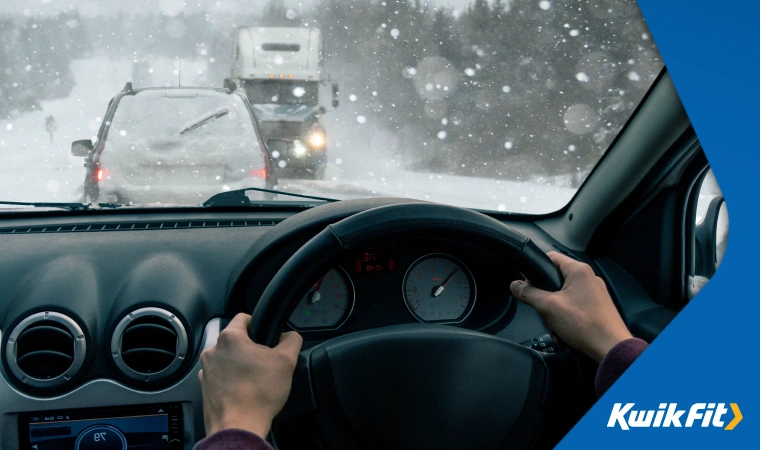5 Common Driving Hazards & How to Avoid Them
Jack Dreyer | Thursday 22nd September 2022 4:30pm

Most journeys that we make in our vehicles are usually straightforward. Usually, your trip will go smoothly with limited drama. However, every time you drive, youíll be faced with potentially dangerous situations that youíll need to react to. Continue reading to find out more about what you can do to stay safe on the roads.
Animals in the road

Being faced with an animal running into the road is a particularly difficult driving experience. When this happens, you need to ensure that youíre aware of your surroundings before making any decisions. The best thing to do is to apply your brakes and hold the steering wheel securely. Make sure that you donít swerve out of your lane as this could cause danger to other road users. With any luck, the animal will move out of the way once youíve applied the brakes.
If there is another car close behind you, applying your brakes too quickly could result in an accident ó again, this is where being aware of your surroundings comes in handy. In general, itís a good idea to drive carefully through areas that are likely to be populated with wildlife, like stretches of woodland, for example.
Reckless driving

Sometimes, the most dangerous hazards we can encounter on the roads are other drivers.
- Reckless driving behaviour includes:
- Driving under the influence of drugs or alcohol
- Driving while distracted (e.g. by a phone or device)
- Tailgating (following another driver too closely)
- Speeding
- Ignoring traffic signs and signals
While there isnít a lot you can do about othersí driving behaviour, you can ensure that your driving is as safe as can be in response. Our tips? Donít take other driversí next moves for granted, keep a safe distance from reckless drivers, and let speeding or aggressive drivers pass you.
Pedestrians and cyclists

The UKís roads are not just used by vehicles, but by pedestrians, horse-riders, and cyclists alike. The responsibility to be safe in these situations of course lies with both parties - the pedestrian and the driver - but the onus falls mostly on the driver in the event of an incident. After all, it's pedestrians who are the most vulnerable road users.
To promote safe roads for all users, itís crucial for drivers to stay alert to the possibilities Ė whether itís someone briefly stepping into the road to pass another pedestrian, or a group of cyclists around the next corner. Many driving best practices hinge on the notion that you can never assume what is about to happen on the road ahead.
Rules that give pedestrians greater priority were recently added to the Highway Code Ė read more here.
Potholes and debris

Potholes are, unfortunately, a common occurrence on UK roads Ė costing drivers £915 million in repairs.
It can be tempting to swerve in the road when you come across a pothole, but drifting into another lane can be more dangerous than the pothole itself. When you come across a pothole or debris in the road, the first step is to slow down. Grip your steering wheel to maintain control over the direction of your vehicle and drive over it slowly.
If you are sure there is no one in the other lane, then by all means, steer out of the way of the pothole or debris with plenty of time to spare.
Discover our pothole safety tips here for more information!
Snowy and wet weather conditions

Winter can cause hazardous conditions for drivers. It is important to ensure that your vehicle is prepared for winter and you have appropriate tyres fitted.
In the UK, all-season tyres are a good tyre choice for countries with mild climates. These tyres combine the attributes of summer and winter tyres to make a tyre that is appropriate for winter and summer driving.
Tyres such as Continentalís AllSeasonContact tyres offer drivers an alternative to the hassle of switching between summer and winter tyres.
Driving in snow
If youíre driving in snow, itís important to take extra care. Driving as slowly and smoothly as possible will ensure that your car retains its grip on the roads.
Try not to accelerate or brake too harshly as this can lead to potential accidents. If you feel your car sliding, steer into the slide to correct it. Itís also important to make sure youíre leaving enough space between your vehicle and those in front of you. Itís always better to allow too much space rather than not enough as this gives you more time to react to hazards.
Driving in rain
In the colder and wetter months, there is an increased risk of aquaplaning. This occurs when your vehicle hits a body of water. If the tread on your tyres is unable to remove water from the road quickly enough, your vehicle will lose traction. As a result, you can lose the ability to steer or brake as your vehicle doesnít have enough contact with the road.
Tread depth, then, has a direct impact on your chances at aquaplaning. Make sure you check your tread depth regularly and, if you do feel your vehicle aquaplaning, follow these instructions:
- Take your foot off the accelerator
- Press the clutch
- Avoid making any sudden movements of the steering wheel or your brakes
- Begin to brake only when your car regains control
Driving hazard rules of thumb
To sum things up, here are some general rules of thumb to keep in mind:
Leave space between your vehicle and the vehicle in front
Minimise stopping distances by ensuring your tyres are up to scratch
Carry out pre-journey checks before long road trips
Donít take road conditions for granted
Stay alert and never drive tired
If youíre not sure your car is performing at its best or a road hazard like a pothole has caused your vehicle damage, be sure to visit your local Kwik Fit to get things running smoothly.
Any facts, figures and prices shown in our blog articles are correct at time of publication.
Featured Articles
Is it Illegal to Drive With One Headlight?
Saturday 19th July 2025
Wondering if itís illegal to drive with one headlight? Learn about the safety risks and penalties of illegal blown bulbs and why you should fix them promptly.
Air Con in EVs & Hybrids: Experts Answer Your Questions
Monday 30th June 2025
Does air con drain EV batteries? Can you use the air con while charging an electric car? Find out the answers to these questions & more from Kwik Fitís experts.
Why Is Your Car Making a Noise? Fixes & Tips
Friday 13th June 2025
When your car starts making unexpected noises, it can certainly be quite disconcerting; it may be nothing to worry about, but hereís what you need to know.









